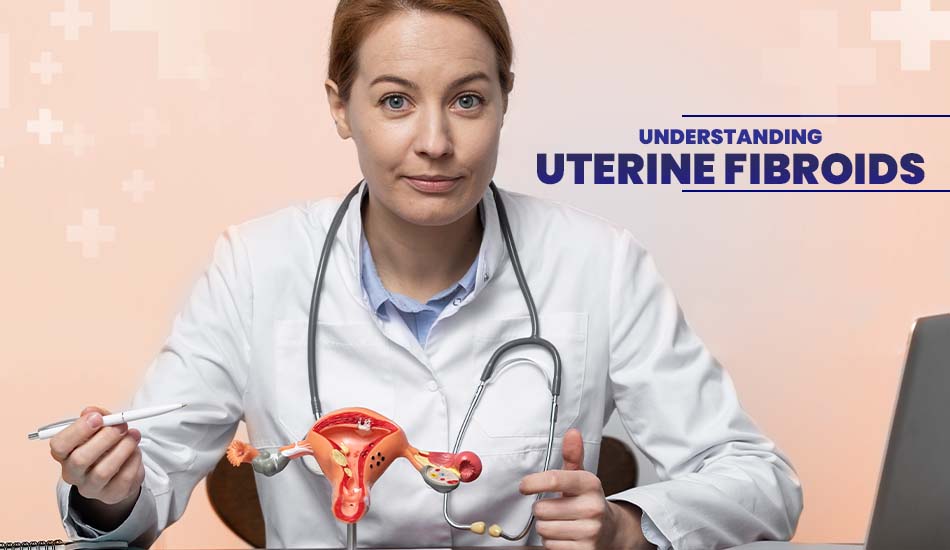
Understanding Uterine Fibroids: Causes, Symptoms, and Treatment Options
Wednesday, 22nd May 2024Uterine fibroids are a common health issue affecting many women, particularly during their reproductive years. While often benign, fibroids can cause significant discomfort and complications for some. This article provides a comprehensive overview of uterine fibroids, including their causes, symptoms, and treatment options.
What Are Uterine Fibroids?
Uterine fibroids, also known as leiomyomas or myomas, are non-cancerous growths that develop in or on the uterus. They vary in size, number, and location within the uterine tissue. Fibroids can be as small as a pea or as large as a melon and can grow inside the uterine cavity, within the muscular wall of the uterus, or on the outer surface of the uterus.
Causes of Uterine Fibroids
The exact cause of uterine fibroids is unknown, but several factors may contribute to their development:
Hormonal Factors
Hormones, particularly estrogen and progesterone, play a significant role in fibroid growth. Fibroids contain more hormone receptors than normal uterine muscle cells, causing them to grow during periods of high hormone levels, such as during pregnancy or hormone replacement therapy.
Genetic Factors
Genetics also play a role in fibroid development. If a woman's mother or sister has fibroids, she is more likely to develop them herself. Specific genetic mutations may contribute to the growth of fibroids.Other Growth Factors
Certain substances in the body, such as insulin-like growth factors, may influence fibroid growth. These factors promote cell proliferation and the development of fibroid tissue.
Extracellular Matrix (ECM)
The extracellular matrix (ECM), which makes cells stick together, is increased in fibroids and makes them fibrous. ECM stores growth factors and causes biological changes in cells, contributing to fibroid growth.
Symptoms of Uterine Fibroids
Many women with fibroids experience no symptoms, and the condition is often discovered during a routine pelvic exam or prenatal ultrasound. However, when symptoms do occur, they can include:
Heavy Menstrual BleedingHeavy menstrual bleeding is one of the most common symptoms of uterine fibroids. Women may experience prolonged periods, severe cramping, and passing of blood clots.
Pelvic Pain and Pressure
Pelvic pain and pressure are frequent complaints among women with fibroids. This pain can range from mild discomfort to severe pain and may be constant or intermittent.
Frequent Urination
Large fibroids can press on the bladder, causing frequent urination or difficulty emptying the bladder completely.
Constipation
Fibroids that press on the rectum can lead to constipation and bloating.
Pain During Intercourse Fibroids located near the cervix or within the uterine cavity can cause pain during intercourse.Lower Back Pain
Large fibroids can also cause lower back pain, especially if they press on nerves or muscles in the back.
Complications During Pregnancy
Fibroids can cause complications during pregnancy and labor, including miscarriage, preterm birth, and the need for a Cesarean section.
Diagnosis of Uterine Fibroids
To diagnose fibroids, a healthcare provider may use several methods:
Pelvic Examination
A routine pelvic examination can reveal the presence of fibroids if the uterus feels enlarged or irregular.
Ultrasound
An ultrasound uses sound waves to create images of the uterus and can confirm the presence, size, and location of fibroids.
Magnetic Resonance Imaging (MRI)
An MRI provides detailed images of fibroids and is useful in planning treatment, especially for large or numerous fibroids.
Hysteroscopy
A hysteroscopy involves inserting a small, lighted telescope through the cervix into the uterus to examine the uterine cavity and identify fibroids.
Laparoscopy
A laparoscopy is a surgical procedure where a small camera is inserted through an incision in the abdomen to view the uterus and other pelvic organs.
Treatment Options for Uterine Fibroids
Treatment for uterine fibroids depends on the severity of symptoms, the size and location of the fibroids, and the patient's desire for future pregnancies. Options include:
Watchful Waiting
For women with mild symptoms or no symptoms, a watchful waiting approach may be appropriate. Regular monitoring ensures that any changes in size or symptoms are addressed promptly.
Medications
Medications can help manage symptoms, including:
- Hormonal Therapies: Birth control pills, gonadotropin-releasing hormone (GnRH) agonists, and other hormonal treatments can regulate menstrual cycles and reduce heavy bleeding.
- Nonsteroidal Anti-Inflammatory Drugs (NSAIDs): NSAIDs can relieve pain and reduce inflammation.
- Tranexamic Acid: This medication can reduce heavy menstrual bleeding.
Minimally Invasive Procedures
Several minimally invasive procedures can treat fibroids, including:
- Uterine Artery Embolization (UAE): This procedure blocks the blood supply to fibroids, causing them to shrink.
- Radiofrequency Ablation: This technique uses radiofrequency energy to destroy fibroid tissue.
- MRI-Guided Focused Ultrasound Surgery (FUS): High-intensity ultrasound waves target and destroy fibroids.
- Myomectomy: The surgical removal of fibroids while preserving the uterus. This option is ideal for women who wish to maintain fertility.
- Hysterectomy: The removal of the uterus. This is the only permanent solution for fibroids and is considered when other treatments have failed or are not suitable.
Conclusion
Uterine fibroids are a common condition that can significantly impact a woman's quality of life. Understanding the causes, symptoms, and treatment options for fibroids is essential for managing the condition effectively. If you suspect you have fibroids or are experiencing symptoms, consult with a healthcare provider to explore your options and develop a personalized treatment plan. Early detection and appropriate treatment can help alleviate symptoms and improve overall health and well-being.


